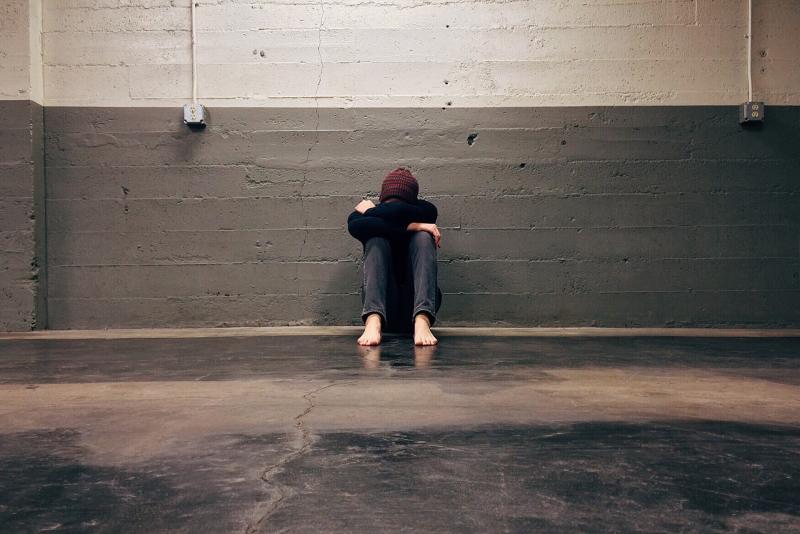Understanding treatment options
Understanding treatment options can help you think about what treatment works for you.
Understanding treatments does not provide medical advice, but could be a helpful start towards talking about your mental health.
One of the most important things about getting support for a mental health condition is understanding your treatment options and what they involve. 'Understanding treatment options' has been developed with young people. It can help you to think about what kind of treatment could be a good fit for you so that you can make informed choices about your care.
'Understanding treatment options' does not provide medical advice or a way to diagnose mental health conditions, but could be a helpful start for talking with your GP, a mental health professional, family or friends about your mental health care.
-
Anorexia nervosa
Download PDF
People who have anorexia often try to keep their weight as low as possible by limiting their eating or exercising too much
-
Anxiety
Download PDF
Anxiety disorders are common, where anxiety becomes out of proportion to the situation and can be there most of the time
-
ADHD
Download PDF
ADHD is not a mental health problem. It is a common neurodevelopmental difference that can make it difficult to pay attention
-
Autism
Download PDF
Autism is a type of neurodivergence which means a difference in the way your brain develops before birth and during childhood
-
Binge eating disorder
Download PDF
Binge eating disorder involves regularly eating a lot in a short time. You may also feel you cannot control your eating
-
Bipolar disorder
Download PDF
Bipolar disorder (manic depression) is a mental health problem which causes you to experience severe mood swings
-
Body dysmorphic disorder
Download PDF
Body dysmorphic disorder involves spending a lot of time worrying about something you think is wrong with your appearance
-
Bulimia nervosa
Download PDF
Bulimia involves repeated binge eating, extreme weight-control and being very concerned about your body shape and weight
-
Conduct disorder and oppositional defiant disorder
Download PDF
Oppositional defiant disorder and conduct disorder aren’t ‘flaws’ they are mental health conditions which can be supported
-
Depression
Download PDF
Depression affects feelings, thoughts, behaviour and the physical body. The symptoms will be slightly different for everyone
-
Obsessive compulsive disorder
Download PDF
Obsessive compulsive disorder is a mental health condition involving obsessions and compulsions which cause a lot of distress
-
Post-traumatic stress disorder
Download PDF
Post-traumatic stress disorder is a mental health condition that some people experience after one or more traumatic events
-
Psychosis and schizophrenia
Download PDF
Schizophrenia is usually first noticed in those over 15 years. Asking for help is important, treatment can help with recovery
-
Self-harm
Download PDF
Self-harm is not a mental health condition itself, but a sign of other difficulties for which you could get support
-
Substance misuse
Download PDF
Misusing drugs can have serious effects on your mental health, physical health, education, work and relationships
-
Tics and Tourette's syndrome
Download PDF
Tics are movements or sounds that are hard to control. Tourette’s syndrome affects the nervous system and causes tics
How do the evidence ratings work?
The treatment options for each mental health condition have a rating to show how much evidence exists to support each option:
Strong evidence – there is lots of high-quality evidence that some young people find this treatment option helpful.
Some evidence – there is enough evidence to indicate that this can be a helpful treatment option.
Emerging evidence – there isn’t much evidence on this treatment option yet, but the research that has been carried out suggests that it could be helpful.
Insufficient evidence – there either hasn’t been any research on this treatment option or there is a small amount of evidence with unclear conclusions.
Evidence of ineffectiveness or harm – there is either strong evidence that this treatment option is unlikely to be helpful or there is evidence that the option is likely to be harmful.
If there is emerging or insufficient evidence for a treatment, it doesn’t mean that it won’t help. It simply means that little scientific research has been done. At the same time, strong evidence for a treatment doesn’t mean that it is guaranteed to help you. It does mean that it has been tried and tested and is helpful for many (but not all) young people who have tried that option.
I think I have more than one of these conditions, which page should I look at?
Many people have more than one condition and some can have three or four. The categories we use on this website overlap with each other. So if you have low mood, you are also likely to experience other emotional difficulties, such as anxiety. You should look at the pages for all the conditions you think you might have. Many of the treatments listed here work with a number of conditions at the same time. Other treatments focus on one problem at a time and your professional will usually decide which one of your conditions to address first.
How did you come up with these pages?
The National Institute for Health and Care Excellence (NICE) publishes guidelines about how to treat mental health difficulties. The guidelines use the best available research evidence and cover mental health treatment for children and young people, so we looked through each of these as the basis for the 'Understanding treatment options' pages. If certain areas weren’t covered by NICE guidance we used the most recent independent guidance on treatment options for each mental health condition.
As well as information about mental health conditions, 'Understanding treatment options' also includes information about certain neurodevelopmental conditions (such as ADHD and Tourette's syndrome). Neurodevelopmental conditions are not the same thing as mental health difficulties, but support is often available from child and adolescent mental health services. We have included this information to help you understand the support options available for these neurodevelopmental disorders and how you might be able to access that support.